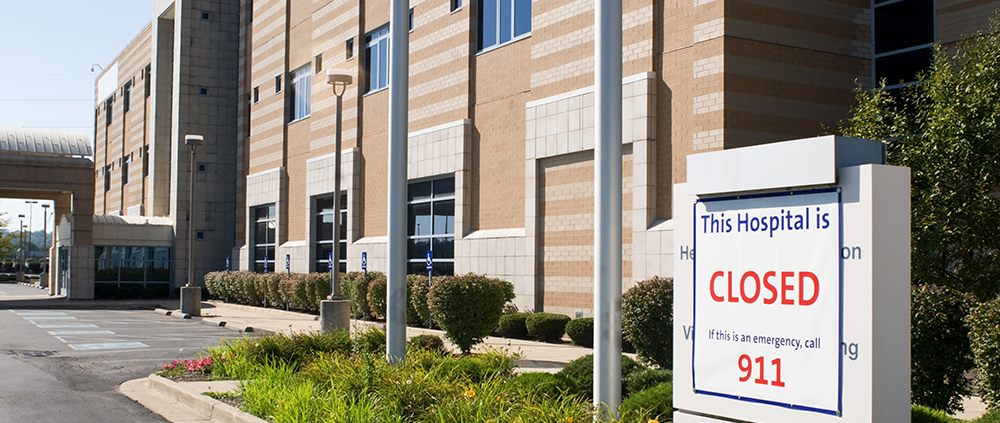- The scope of Medicaid cuts: A financial crisis in motion
- What’s at stake? Real financial consequences for health systems
- Impact on revenue cycle management
- Streamline eligibility and support the uninsured: The first line of defense
- Patient payments are more critical than ever
- Safeguarding your future: How Phreesia’s Revenue Cycle solutions can be your strategic partner
- A volatile future with a hopeful outlook
The ability to provide quality care—and in some cases, to keep the doors open—is under real threat.
The U.S. healthcare system stands at a critical juncture. The end of pandemic-era Medicaid protections and the possibility of further federal and state funding reductions are set to create a financial storm for hospitals and health systems nationwide. Meanwhile, other pressures are mounting: patient financial responsibility is rising steeply, staffing shortages are worsening and administrative overhead costs remain stubbornly high.
This isn’t a future threat—it’s happening now. To stay afloat, health systems must act fast to protect revenue, minimize financial risk and preserve access to care.

Key challenges include:
- Ongoing Medicaid disenrollments affecting up to 25M people (CBPP, 2024)
- Skyrocketing patient out-of-pocket costs—projected to reach $491.6B in 2025 (Mend, 2024)
- Staffing shortages: Estimated 295,800 RN shortfall by 2025 (Vivian Health, 2024)
- Shrinking hospital margins from rising administrative and uncompensated care costs (Fierce Healthcare, 2024)
In this blog, we’ll explore where health systems are losing revenue and how Phreesia helps protect the bottom line with purpose-built Revenue Cycle Management (RCM) tools.
The scope of Medicaid cuts: A financial crisis in motion
The end of the pandemic-era continuous Medicaid enrollment protections has triggered one of the largest mass disenrollments in U.S. history. Since 2023, more than 25 million individuals have lost coverage—and this number continues to rise (CBPP, 2024). Many of those removed from the rolls remain eligible but are caught in bureaucratic limbo, overwhelmed by paperwork, language barriers, or misinformation.

In addition to redetermination fallout, healthcare systems must contend with state and federal legislative proposals that aim to curb spending. The Department of Health and Human Services (HHS) faces a proposed $880 billion budget reduction for FY2025 (Axios, 2025), which would slash critical public health funding and impact programs run by CDC, FDA and NIH. These cuts mean less federal support for disease monitoring, emergency preparedness and population health programs that health systems rely on.
Meanwhile, CMS has finalized a 2.83% reduction to the 2025 Medicare Physician Fee Schedule (Axios, 2025), continuing a five-year trend of payment cuts. The ripple effects of all these changes are putting extreme pressure on health systems to absorb costs while maintaining high-quality care.
What’s at stake? Real financial consequences for health systems
The financial toll of Medicaid disenrollments is already unfolding across hospitals and health systems. For every patient who loses Medicaid coverage, providers risk losing guaranteed reimbursements—forcing them to absorb the costs of care or shift financial responsibility to patients. This shift directly threatens the stability of health systems that serve large Medicaid populations, particularly safety-net hospitals and rural providers.
Not all patients who lose Medicaid will qualify for Affordable Care Act (ACA) marketplace plans. Even for those who do, high deductibles and copays mean the financial burden is often too great. As a result, providers see more patients deferring care, defaulting on bills, or needing charity assistance. Patient out-of-pocket spending is projected to reach $491.6 billion in 2025 (Mend, 2024).

These trends lead to measurable consequences:
- Rising bad debt: Hospitals are reporting double-digit increases in bad debt and charity care. A 14% YoY increase was observed in early 2024 (Becker’s Hospital Review, 2024).
- Revenue stagnation: Without steady reimbursement streams, systems are forced to freeze service expansions and delay infrastructure investments.
- Operational stress: Budget shortfalls make it harder to attract and retain staff, upgrade technology and maintain essential services.
- Closures and access loss: More than 180 rural hospitals have closed since 2010, and financial instability threatens to accelerate this trend (NRHA, 2025).
Financial pressure also affects strategic planning. Hospitals may hesitate to invest in value-based care programs or new service lines when reimbursement becomes unpredictable. Without a strong revenue cycle foundation, even well-performing systems are at risk of disruption.
Impact on revenue cycle management
Federal funding cuts have far-reaching implications for health systems’ revenue cycles. These include:
- Increased uncompensated care: Reductions in Medicaid and Medicare reimbursements, coupled with the elimination of public health programs, increase the volume of uncompensated care.
- Operational challenges: Downsizing of federal agencies such as the CDC and NIH may disrupt collaborative programs and data-sharing.
- Financial uncertainty: Budgeting and long-term planning become more difficult in the face of policy instability.
To stay ahead, health systems must invest in automation, diversify funding streams and strengthen their revenue cycle strategies.
Streamline eligibility and support the uninsured: The first line of defense
As insurance coverage becomes more volatile, verifying eligibility before care is delivered is no longer optional—it’s critical. Health systems using manual or outdated verification processes face higher denial rates, greater uncompensated care and dissatisfied patients who are caught off guard by unexpected bills.
Phreesia’s direct connection to CMS enables instant, automated eligibility checks at scheduling and check-in. This ensures that staff and patients have the most current information about coverage status, helping to avoid claim denials and support accurate financial estimates.
But eligibility verification is only part of the solution. When a patient is uninsured or underinsured, Phreesia’s workflow can automatically flag them for follow-up and route them to the health system’s financial counselors. From there, the counselor can help determine if the patient qualifies for:
- COBRA coverage
- Workers’ compensation benefits
- ACA marketplace plans
- Hospital-funded charity care
- Medicaid re-enrollment, if applicable
This combination of automation and personalized follow-up increases the likelihood that patients receive the coverage they need—and that providers are paid for the care they deliver.
Patient payments are more critical than ever
As health coverage shifts, and more patients move to high-deductible health plans or become temporarily uninsured, patient financial responsibility continues to climb. Many are now responsible for a greater share of their care costs, including copays, deductibles and non-covered services.

Traditional post-service billing often leads to missed payments. Once the patient leaves the facility, collection rates drop sharply. To preserve revenue, providers must adopt proactive, digital-first strategies that prioritize payments throughout the care journey.
Phreesia’s Payment Assurance and Bill Pay solutions help organizations collect early and efficiently. Capabilities include:
- Pre-service estimates
- At-check-in payment prompts
- Flexible post-service options (e.g., text/email links, mobile wallets)
- Consolidated enterprise-wide patient balances
With automated outreach and user-friendly tools, patients are more likely to pay—and pay on time. For instance, there has been a significant shift in payment methods, with the percentage of client revenue from digital payments increasing from 75% to 90% between December 2023 and December 2024 (Business Wire, 2025).
Safeguarding your future: How Phreesia’s Revenue Cycle solutions can be your strategic partner
Phreesia’s Revenue Cycle solutions provide a modern, integrated approach to help organizations remain agile and resilient. These tools reduce manual work, empower staff with insights and support patients during financially stressful times.
Key capabilities include:
- Eligibility and benefits verification: Verify insurance in real time through a CMS-connected workflow.
- Patient intake and registration: Digitize check-in and financial screenings to reduce delays and staff workload.
- Patient payments and collections: Collect payments pre-service, at point-of-care or post-visit using intuitive tools.
- Revenue cycle analytics and reporting: Monitor denial trends, forecast financial risk and optimize payer mix.
By addressing financial risk at every stage of the care journey, Phreesia empowers health systems to protect margins, increase revenue and improve the patient experience.

A volatile future with a hopeful outlook
Medicaid disenrollments, rising patient financial responsibility and federal funding cuts are not distant threats—they’re reshaping healthcare right now. Systems that act now can protect their margins, improve patient access and lead through uncertainty.
Phreesia’s suite of revenue cycle tools helps you:
- Maximize patient payments
- Streamline eligibility and intake
- Mitigate uncompensated care
- Gain the data visibility needed to adapt quickly
Start a conversation with Phreesia today to learn how you can safeguard your health system’s revenue in an uncertain future.
Request a demo
Let us show you how Phreesia provides the modern, convenient healthcare experience your patients want and your staff expect.
Phreesia cannot accept any sensitive personal or health information. Please contact your healthcare provider directly.
Have questions about Phreesia? Click here for an FAQ about who we are, what we do and how we support healthcare organizations nationwide.




